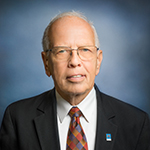Medi-Cal reimbursement rates threaten the health of low-income residents
More than 13 million Californians receive their health coverage through Medi-Cal – that’s one third of the state’s population benefitting from the state’s Medicaid program. This essential program serves low-income individuals and families, the majority of whom are people of color. Unfortunately, the Medi-Cal program lacks adequate funding to ensure these enrollees are benefitting to the fullest. Low reimbursement rates make it difficult to find providers willing to serve this population.
Historically, California is near the bottom when it comes to Medicaid reimbursement rates across the county. Research shows the
low rates limit access to quality care and contribute to poor health outcomes for Medicaid beneficiaries.
HOW LOW ARE MEDI-CAL REIMBURSEMENT RATES?
In a recent opinion article, Elaine Batchlor, MD, MPH, the CEO of MLK Community Healthcare and MLK Community Hospital explained just how bad Medi-Cal reimbursement rates are. She said MLK Community Hospital receives about $2,000 from a commercial insurance plan for an emergency room visit. Medicare pays $650 for the same visit and Medi-Cal only pays $150 for that visit. If the majority of the hospital’s patients had commercial insurance, it might not be a problem. But the majority of people served by that hospital depend on Medi-Cal.
Civil rights advocates and attorneys argue that low Medi-Cal reimbursement rates are discriminatory and should be considered a racial justice issue. During the COVID-19 pandemic, we saw the result of inadequate investment in Medi-Cal. Low-income people of color, many of whom were Medi-Cal beneficiaries, suffered a disproportionate impact from the disease, with more cases and more deaths. While underlying conditions played a role in many of the severe cases, those conditions are just one more result of poor access to care. There simply aren’t enough providers willing to accept the low reimbursement rates, so care is delayed.
The current reimbursement rates put a tremendous amount of pressure on providers, making the entire Medicaid system unsustainable. The American Hospital Association reports that hospitals received payment of only 88 cents for every dollar spent on Medicaid patients in 2020. That underpayment totaled nearly $25 billion.
SO WHAT CAN BE DONE ABOUT THIS PROBLEM?
The simple answer is raise reimbursement rates. Medicaid providers across the country should be paid at least what Medicare providers receive. Equal pay is an important step toward health equity, the fair and just opportunity for an individual to be as healthy as possible. Increased reimbursement rates would allow more providers to work in the clinics and practices that serve Medicaid beneficiaries.
But, simple doesn’t equal easy. Since Medicaid is funded by both federal and state dollars, there will have to be some government negotiation to determine where the additional funding comes from. In the meantime, as the CEO of the largest publicly operated plan in the country, serving more than 2.5 million Medi-Cal beneficiaries, I am advocating for increased reimbursement, but I couldn’t wait for lawmakers to act.
WHAT IS L.A. CARE HEALTH PLAN DOING?
In 2018, L.A. Care launched “Elevating the Safety Net,” a $155 million initiative designed to recruit, train and retain highly-qualified primary care physicians in the Los Angeles County safety net. The safety net are those clinics and practices that provide care regardless of an individual’s ability to pay – the same providers who care for Medi-Cal beneficiaries. The initiative offers grants to clinics and practices to attract new physicians through salary subsidies, sign-on bonuses, or relocation costs. It also offers medical school loan repayment of up to $180,000 for new physicians who commit to working in the county safety net for three years. And it provides eight full-ride medical school scholarships each year to students who have expressed an interest in working in underserved communities. Each year, four of the scholars attend the David Geffen School of Medicine at UCLA and four attend the Charles R. Drew University of Medicine and Science.
Since its launch, the initiative has resulted in 139 new physicians working in the L.A. County safety net, 144 new physicians have been approved for loan repayment grants, and 40 students have received scholarships. The total commitment to date is near $100 million. While we are proud of what Elevating the Safety Net has accomplished so far, it is just a drop in the bucket compared to what is needed.
Low Medicaid reimbursement rates are creating a crisis in care. People are going without care, and it should not happen in the wealthiest nation in the world and in a state with the largest economy in the country. There is a lot of talk about health equity in the wake of the COVID-19 pandemic, but to achieve that laudable goal, there must be greater investment in the Medicaid system.
We can be proud that California leads the way nationally in introducing new policies that expand access to Medi-Cal for tens of thousands of individuals who historically were excluded. But we must now ask for the same consideration for Medi-Cal providers. Pay equity is a first step in advancing health equity, which means that everyone has a fair and just opportunity to be as healthy as possible. Until Medi-Cal providers are valued through equitable reimbursement, patients will continue to be challenged to find the care they need, when they need it.
John Baackes is the CEO of L.A. Care Health Plan. Learn more at lacare.org.
Return to Health Care Leadership Symposium & Awards Main Page

